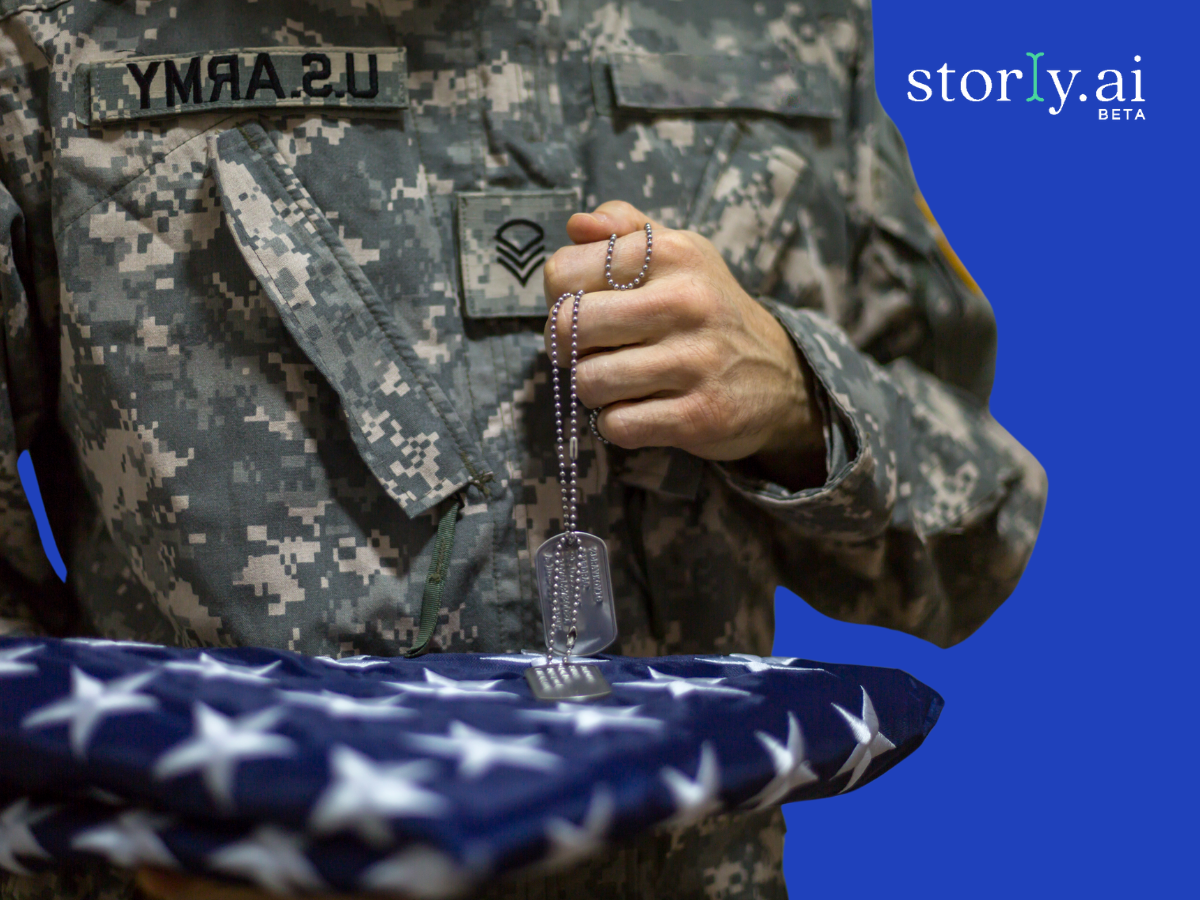When it comes to sharing the raw and unfiltered reality of warfare, how to tell a true war story is as much about the truth as it is about the listener’s experience. Here are seven tips to ensure your war stories resonate with authenticity and impact.

Understanding the Essence of a True War Story
A true war story goes beyond the battlefield; it captures the heart and soul of the experience. To convey this effectively, one must first comprehend the multifaceted nature of war and its profound effects on those involved.
The Importance of Authenticity in Telling a True War Story
Authenticity is the cornerstone of any war story. It’s not just about recounting events; it’s about being truthful to the emotions and realities of those moments. When a story is authentic, it creates a bridge of empathy between the teller and the listener.
Embracing the Emotional Impact of War Stories
War stories often carry a heavy emotional burden. Acknowledging and embracing these emotions can lead to a more powerful and heartfelt narrative. It allows the audience to connect on a deeper level and understand the human side of war.
By integrating these elements into your storytelling, you create a space where truth and memory converge, offering a glimpse into the complexities of war that often go unspoken. Remember, a true war story is not just about facts; it’s about the lasting imprint it leaves on both the teller and the listener.
Essential Elements to Include in Your War Story
When crafting a war story that stands the test of time and leaves a mark on the reader, including key elements is critical. These elements serve as the foundation of your narrative, providing depth and context to the harrowing experiences of conflict.
Describing the Setting: The Battlefront
The setting of a war story is a character in its own right. Detailing the battlefront’s environment sets the stage for the narrative, immersing the reader in the sights, sounds, and smells of the conflict zone. This vivid backdrop is essential for authenticity.
Portraying the Characters: Soldiers and Civilians
Characters are the heart of any story. In war narratives, the portrayal of soldiers and civilians is crucial. Their fears, strengths, and vulnerabilities must be conveyed with nuance and respect, offering a human face to the often inhuman circumstances of war.

How to Structure Your True War Story
Structuring your war story is pivotal in guiding your readers through the complexities of military conflict and the personal journeys within it. A well-organized narrative can enhance the impact and clarity of the tale you’re telling.
Building a Chronological Narrative
A chronological structure provides a clear, linear progression of events, which can be crucial for readers to understand the sequence of the war’s occurrences. This traditional storytelling format helps maintain clarity and gives the reader a sense of time and evolution within the story.
Incorporating Flashbacks and Memories
Flashbacks and memories are powerful tools for revealing character backstories and providing context to present actions. They can be used to juxtapose past and present, highlighting changes in characters or circumstances and offering a deeper emotional connection to the narrative.
The Role of Sensory Details in a True War Story
Sensory details are the threads that weave the fabric of a true war story, bringing it to life for the reader. They are essential in creating an immersive experience that can transport the audience to the heart of the action.
Using Vivid Imagery to Engage Readers
Vivid imagery is a potent tool in storytelling, painting a picture so clear that readers feel they are witnessing the events firsthand. Descriptive language that captures the visuals of the war environment engages readers’ imaginations, making the story more relatable and impactful.
The Power of Sound and Smell in Recreating War Scenes
Sound and smell have the unique ability to evoke memories and emotions. Incorporating these sensory details can recreate the atmosphere of war scenes with remarkable intensity. The roar of gunfire or the acrid scent of smoke can be almost palpable, deeply resonating with the reader’s senses.

Balancing Fact and Emotion in Your War Story
Crafting a true war story requires a delicate balance between the factual accuracy of historical events and the emotional truth of individual experiences. Striking this balance is key to creating a narrative that honors reality while capturing the hearts of readers.
Staying True to Historical Events
Accuracy in detailing historical events provides the framework for trustworthiness in your storytelling. It’s essential to research and stay true to the facts, as this grounds your story in reality and gives it credibility. Readers should be able to trust that the foundation of your narrative is based on actual occurrences.
Conveying the Emotional Turmoil of War
While facts provide the structure, the emotional content supplies the soul of the story. Describing the inner turmoil and psychological impact of war on individuals allows readers to empathize with the characters. This emotional depth transforms a mere account of events into a powerful narrative that can move and educate its audience.
Techniques to Enhance the Impact of Your War Story
To leave a lasting impression, a true war story must transcend the recounting of events and touch the reader on a deeper level. Employing various literary techniques can significantly enhance the impact of your narrative.
The Use of Symbolism and Metaphor
Symbolism and metaphor are powerful tools that add layers of meaning to a war story. They allow you to convey complex themes and emotions subtly and can provide readers with a richer understanding of the experiences described. Symbols and metaphors can turn a simple account into a profound exploration of the human condition.
Creating Suspense and Tension in Your Narrative
Suspense and tension are the engines that drive a story forward and keep readers engaged. In a war story, building suspense involves careful pacing and the strategic withholding of information. Tension arises naturally from the uncertainty and danger inherent in war, but it’s the writer’s skill in portraying these elements that determines the story’s grip on its audience.

Honoring the Real Heroes: Respect and Sensitivity in Telling a War Story
The act of telling a war story is not just about narrative technique; it’s a tribute to those who have lived through the realities of war. It requires a storyteller to approach the subject with the utmost respect and sensitivity.
Paying Tribute to the Fallen
In honoring the memory of the fallen, it’s crucial to tell their stories with dignity and reverence. Paying tribute means recognizing their sacrifices without glorifying the violence of war. It’s about remembering the individuals, their dreams, and their humanity, not just their role in the conflict.
Understanding the Responsibility of Telling True War Stories
Telling true war stories carries a significant responsibility. It involves an ethical obligation to portray events and people accurately and empathetically. As a storyteller, one must be conscious of the impact these stories can have on readers, veterans, and the families of those who served. It’s about bearing witness to history and ensuring that the true cost of war is neither forgotten nor misrepresented.
Frequently Asked Questions About Telling True War Stories
What are O’Brien’s rules for telling a true war story?
Tim O’Brien, celebrated author of “The Things They Carried,” outlines several rules for telling a true war story. He emphasizes the importance of truth beyond facts, where the story’s purpose is to evoke the feelings of war rather than to simply recount events. O’Brien suggests that true war stories are never moral but always complex and difficult to interpret. Learn more about O’Brien’s perspective on storytelling.
What is going on in “How Do You Tell a True War Story”?
In “How Do You Tell a True War Story,” O’Brien explores the intricate nature of war narratives. He delves into the paradoxes and emotional weights that come with recounting such experiences. The story itself acts as a meditation on the art of storytelling, questioning the very nature of truth and the way it can be represented through the fog of memory and trauma. Discover the depth of O’Brien’s narrative here.
How do you tell a true war story narrative structure?
The narrative structure of a true war story often defies linear progression. It may involve fragmented timelines, shifting perspectives, and a blend of reality and imagination. This structure reflects the chaotic and disjointed nature of memory, especially memories tainted by the extremities of war.
Why is it so hard to tell a true war story?
Telling a true war story is challenging because it requires capturing the contradictions and ambiguities of war. It’s difficult to convey the intense emotions and surreal experiences that come with combat. Additionally, the storyteller must navigate personal bias, unreliable memories, and the listener’s limited understanding of war’s realities.



